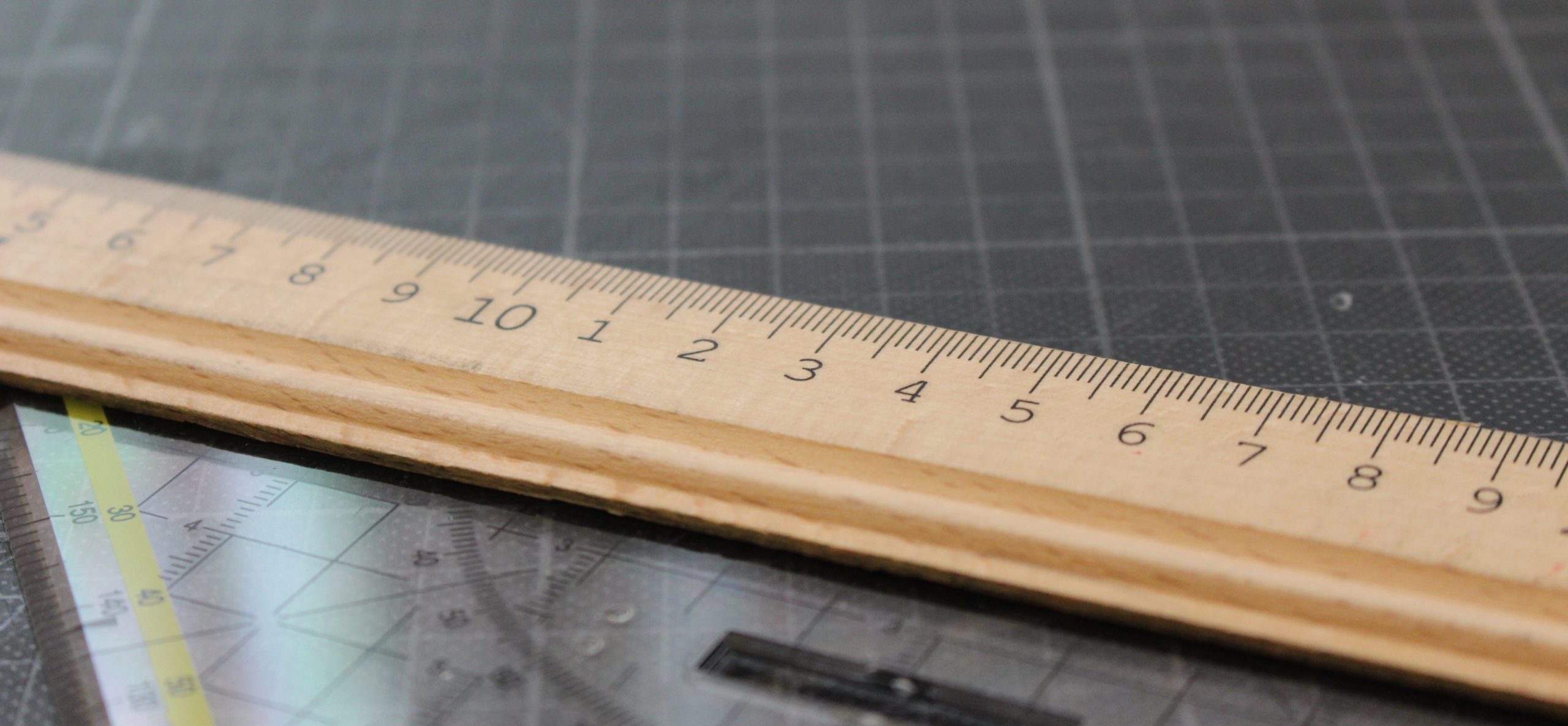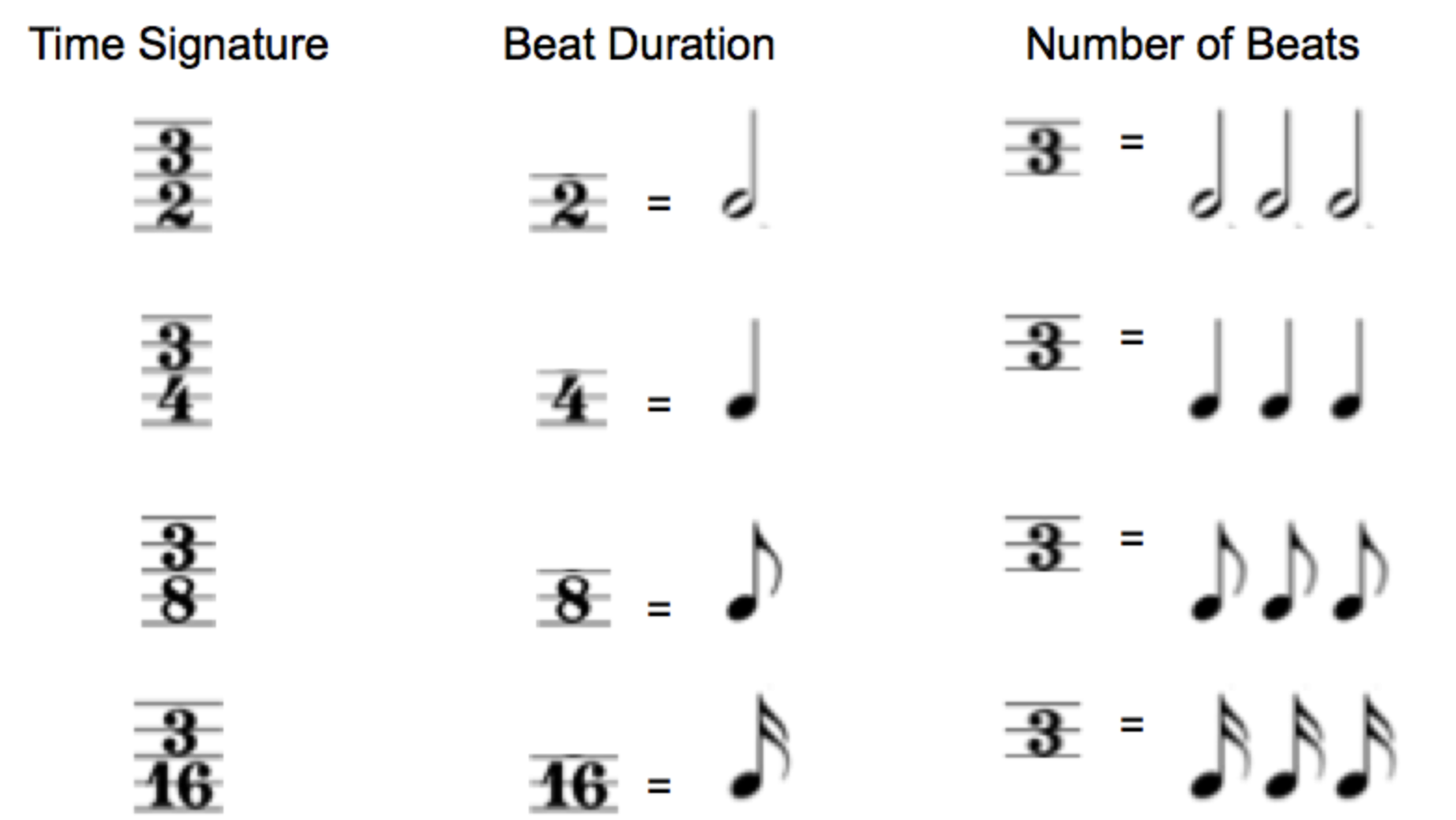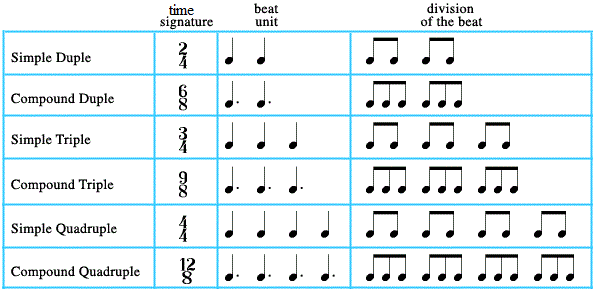
If you could map out a piece of music onto a ruler of time (so the length of the music in time corresponds to the physical length of the ruler), the beats would be the units of measurement on the ruler.
Music is made up of notes of different lengths (that’s how we have rhythm), and we measure the length of notes in beats.
We have different symbols and names for these different lengths of notes:

Think of a measure as a container of a fixed amount of beats.
You might have heard bands starting a song with the drummer shouting “1, 2, 3, 4!” That’s because their container has 4 beats – and the drummer counting in is giving the band one whole measure to prepare.
If you’re learning to read music, this is what measures look like:

Going back to the ruler analogy, it’s like how one foot has a fixed amount of twelve inches, or one centimetre has a fixed amount of ten millimetres.
But in music, this fixed amount of beats is changeable, and it is determined by the time signature.
You’ll spot the time signature at the beginning of the music – it’s two numbers stacked vertically.
The top number tells you how many beats there are in one measure.
The bottom number tells you what kind of note is considered one beat.

In the first example, the bottom number is 2, which means one-half note is considered one beat. The top number is 3, which means one measure has three half-note beats.
Each Time Signature can be classified as a certain meter.
A meter is a specific pattern of strong and weak pulses – or, you can think of it as the rhythmic feel of the music. Generally speaking, there are two types of meter: simple and compound.
In a simple meter, the beat is divided into two notes; in a compound meter, the beat is divided into three.
They’ll feel like this:
1. Simple Duple: ONE and TWO and (2/2, 2/4, 2/8, etc)
2. Simple Triple: ONE and TWO and THREE and (3/2, 3/4, 3/8, etc)
3. Simple Quadruple: ONE and TWO and THREE and FOUR and (4/2, 4/4, 4/8, etc)
4. Compound Duple: ONE and a TWO and a (6/8), or ONE two three FOUR five six (6/4)
5. Compound Triple: ONE and a TWO and a THREE and a (9/8, etc)
6. Compound Quadruple: ONE and a TWO and a THREE and a FOUR and a (12/8, etc)

Meters can get pretty complex – you can have a compound quintuple meter (15/8), or a Mixed Meter where the meter changes every measure!

Last but not least, Tempo is the speed of the music. Being able to keep a steady tempo is a hallmark of good rhythm and timing.
Tempo is typically expressed by either Tempo Markings – in words – or Beats Per Minute (BPM) – in numbers. For example, you might see something like this:

Allegro means fast or lively in Italian – and what’s inside the brackets means a quarter note beat is played at 144 BPM. This is when you’ll grab your metronome, set it to 144 BPM, and find your tempo!
And there you have it – your Rhythm Basics! Don’t forget to check out more of our tips on rhythm, practice, and other musician things!
Soundbrenner is a company dedicated to helping musicians stay focused on what truly matters: their music. By creating innovative devices, such as Soundbrenner Pulse and Core, our goal is to deliver the best possible practice experience for musicians. Click here to find out more.
Got a question about Soundbrenner wearables? Reach out to us at [email protected], we’re happy to help!